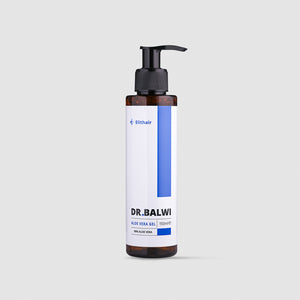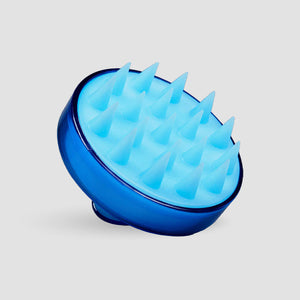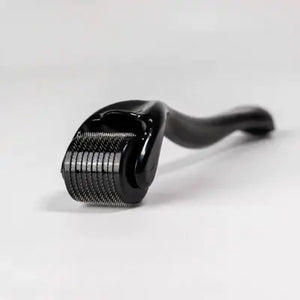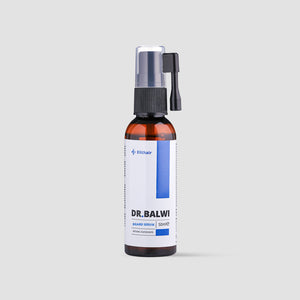
Hair breaks off: What to do, where does it come from?
You can recognize broken hairs by two different accompanying symptoms. While your hair on your head appears to be getting shorter and thinner, the hairs lying on the floor and on your clothing are multiplying in parallel. Hair breakage can be caused by care mistakes or a temporary infection, which is minor and not cause for concern. However, if you suffer from trichoclasia with uneven breakage, you should first address the source of the problem and its underlying causes.
Table of contents
- Your hair is breaking off - find out the causes!
- Various reasons for hair breakage and hair loss
- Conclusion: Hair is breaking off – combating the cause stops the consequences!
Your hair is breaking off - find out the causes!
The result is undeniable. Your once thick and shiny hair growth seems to be diminishing. When you style your hair, you notice that the hair on top of your head is getting shorter and shorter and is almost impossible to manage. This difficulty in styling and frizz are consequences that accompany broken hair. Don't stress yourself out, but take your time and consider different options to find out when your hair started breaking. This insight will help you get to the root cause so you can take appropriate action and initiate the necessary measures to combat hair breakage. Sometimes the investigation into the cause can take a long time and lead to multiple influences that are damaging your hair. If illness or medication can be ruled out, you should get the problem under control yourself and as soon as possible by following the recommendations below.
Various reasons for hair breakage and hair loss
- Like hair loss, broken hair can be caused by internal and external influences.
- Hormonal imbalances, mechanical or chemical stress and nutritional deficiencies caused by a diet that is unfriendly to hair are not uncommon.
- Hair problems with breakage can also occur as a result of medication or a fungal infection of the scalp.
- Even intensive sunbathing or frequent visits to the swimming pool and bathing in the sea damage the hair structure and can lead to breakage or hair loss.
- Most causes lead to a gradual progression, which results in a rough and dull hair structure long before the actual breakage.
- Frequent coloring is damaging to your hair and can lead to an undesirable side effect - a large amount of broken hair - as a direct result of the coloring.
- Above all, bleaching as a strong chemical procedure should not be underestimated.
- In this case, the effect - the hair breaks off - occurs immediately when the color is washed out and without any warning signals such as a previously deteriorated hair structure.
Measures for treatment from inside AND outside
You can only prevent hair breakage caused by external influences if you address the cause. Reviewing your hair care and treatment habits allows you to rule out the risk factor for hair breakage and simultaneously find a way to restore shine and prevent further breakage. With special hair treatments and gentle treatments, as well as avoiding heat styling and strong sun exposure, your hair will recover and grow back without breakage. However, you need patience, because healthy hair growth doesn't happen overnight. It can take months before you see results and know that your hair is growing normally again. Your main focus is on treating it from within. Changing your diet to a healthy, vitamin- and nutrient-rich diet is the key to thick hair growth. You've noticed: Your hair is breaking off. Now you've identified a deficiency as the cause, which you can only combat from within. Zinc and iron deficiencies , in particular, prove to be hair-damaging influences, which you can compensate for by increasing your intake of the missing nutrients.
Unstoppable hair breakage with hair loss – is a hair transplant possible?
If dietary changes, stress reduction, and other measures don't work, only a hair transplant can help in the long term. Severe and long-term hair breakage often leads to hair loss, which in turn leads to baldness and dampens your self-confidence. Before a reputable hair clinic performs a hair transplant, you will have an initial, non-binding consultation to discuss the possible causes. The consultation is followed by a diagnostic assessment, during which the treatment team will examine your hair structure and scalp. Hair implantation allows you to opt for thicker hair growth and be confident that the visible effects of hair breakage will no longer be a part of your daily routine. Since new hair growth after a follicle transplant takes some time and only shows results after three to six months, you should also be patient with a hair implant.
Conclusion: Hair is breaking off – combating the cause stops the consequences!
It's like a curse. There's a lot of hair on your clothes that's significantly shorter than your original hair length. At the same time, you notice that the length of your hair is getting thinner and looks lifeless. If your hair is breaking off, you should act quickly and don't wait too long to investigate the cause. Because once you know the cause of the problem, you can effectively counteract it and stop it from getting worse. Without appropriate measures, you can expect your hair to continue breaking, ultimately leading to thinning or hair loss. You're particularly at risk of baldness if the cause of hair breakage is a scalp condition or hormonal imbalance. In these cases, you should seek medical advice and, if necessary, treatment. Shampoos, vitamin-rich foods, and supplements with hair-vitalizing ingredients are ineffective in these cases. If you can't stop the problem, the desired fullness of your hair can be restored with a hair transplant. The sooner you know the cause and take action, the better hair breakage problems can be treated.




















